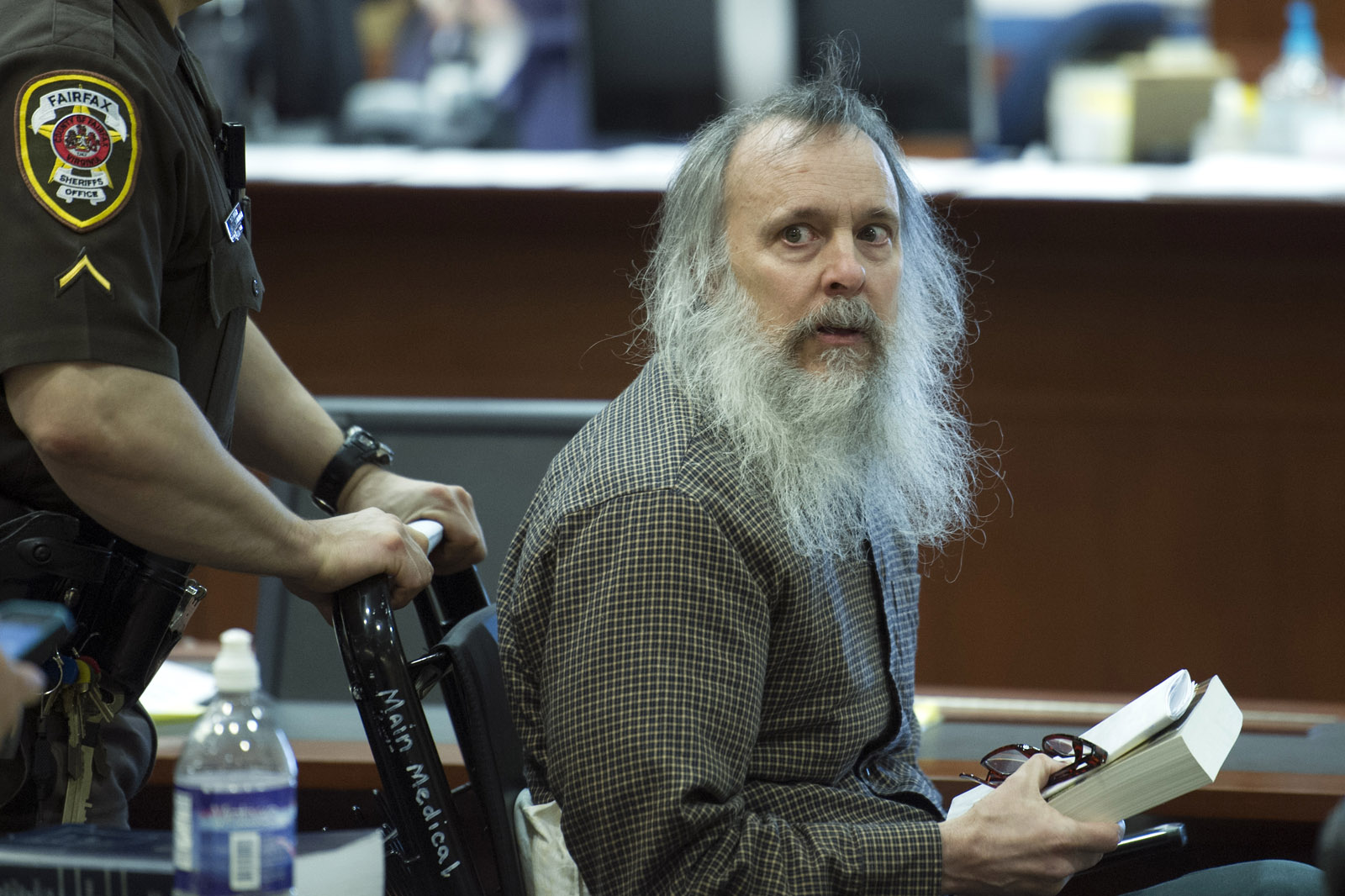
Years after serial killer Charles Severance terrorized Alexandria, Virginia, and was convicted in three murders, the lead prosecutor is sharing key insights into the case.
Commonwealth’s Attorney for Alexandria, Bryan Porter, provided insight on why Severance chose his victims — and why he honed in on a specific Alexandria neighborhood.
“He wanted it to be terrifying,” Porter said of Severance’s crimes.
Porter recalled the years he spent working on the investigation and prosecution of Severances’s crimes while sitting behind his desk inside the Alexandria Courthouse building. If anyone can know a man without talking to him, Porter said he has come close — having read thousands of pages of Severance’s writings.
In 2016, a Fairfax County jury agreed with Porter that Severance was guilty of killing three people over a 13-year span, starting with realtor Nancy Dunning’s murder in 2003.
Porter hung his case on ballistics evidence and the similar manner in which transportation planner Ron Kirby and music teacher Nancy Lodato were killed just as Dunning had been — shot in broad daylight at their front doors.
Severance was convicted and sentenced to life in prison plus an additional 48 years.
“He writes specifically about the method, and he writes specifically about the guns and ammo; and it’s not hard to pull out what he was thinking. But on the flip side, he never names the victims specifically. He hints at them,” Porter said.
But Porter believes he knows why Severance chose his victims. Neighbors in Alexandria have long supposed that Dunning was killed because she was married to then-Sheriff Jim Dunning, who fell under suspicion following her death. Porter confirmed Dunning’s husband was the link to Severance, dating back to a custody dispute between Severance and his son’s mother.
“I know he was extremely angry about the custody dispute. They were real reasons to blame the deputies because they had protected his son throughout the custody battle and the judge wouldn’t allow him to even touch his kid. I know Severance blamed the deputies for that because of his writings, and then they served him a protective order with Jim Dunning’s name on it,” Porter said.
“What he was doing, I think was, ‘Hey you want to take my kid away from me? OK, I’ll take away your wife away, and we’ll see how that feels,'” Porter said of Severance’s thought process.
But it was the seemingly random killings of Kirby in November 2013 and Lodato the following February that pushed the community of Alexandria to the edge.
Porter understands that it is human nature to want to make sense of why someone dies, but he said the victims’ deaths had nothing to do with who they were — rather, where they lived.
“Honestly, and this is a controversial opinion, I think he was picking the neighborhood, and he was looking for older people home alone during the day by themselves because he thought it’s easier prey for him. And if you think about it, in that neighborhood, anyone who is at home at 11 on a weekday is probably going to be affluent. They’re likely going to be retired. If you’re affluent and retired, that means you probably have connections in the city,” Porter said.
Severance lived in Park Fairfax, on the outskirts of the neighborhood where he killed all three of his victims who lived within a mile of each other. Porter said Severance had to drive through that neighborhood to go home.
“He was kind of an outcast. He had a one-bedroom condo. He couldn’t hold a job. He had relationships with women very briefly and they left him. He didn’t have any money. He ran for mayor and he got laughed off the stage,” Porter said.
By living where they did, Kirby and Lodato represented everything Severance hated and didn’t have: Wealth, power and influence.
“I think the real motive had kind of morphed from the real direct ‘I’m getting back at you’ to ‘I want to get back at everyone collectively in the government elites, and this neighborhood is a good vehicle for doing that because I hate the people who live in that neighborhood.'”
Kirby’s murder took place just weeks into Porter’s first term as commonwealth’s attorney.
Suddenly, the new prosecutor was in the spotlight, handed the biggest case of his career thus far. In strategizing how to approach the complicated triple murder trial, Porter combed through Severance’s journals and his annotated Bible, looking for clues.
“If you think of the Unabomber, they are almost exactly the same. They look alike. The diagnoses were similar. They both hated technology and modern society, and they had a political theory to what they were doing. Both very intelligent,” Porter said.
Among the themes throughout Severance’s writings was a clear fascination with the colonization of the Ohio River Valley and Gen. Edward Braddock’s role in imposing Western culture on indigenous people.
“At first I thought it was just some random thing, but now I’m convinced that all of these murders occurred in the area they occurred in off Braddock Road and that Braddock Road had something to do with it because he was fascinated by General Braddock, which seems crazy, but if you put the three murders on a map, there’s a triangle bisected by Braddock Road. And the cannon at the intersection of Russell and Braddock is, like, right in the middle of the triangle,” he said.
“And I’m looking at this history stuff, and he keeps talking about ‘tomahawking homesteads in the backwoods of America.’ In the end, I realized that was a metaphor for him, for what he was doing.”
“It doesn’t really make sense from the outside to a lucid brain. But to him, he identified with the Native Americans. He felt like the local government, Alexandria, had imposed its will on him, the noble savage, and taken away his son in a custody dispute. And he was angry about it. And so he was going to tomahawk homesteads … basically, resort to guerrilla warfare and start killing people and that, of course, brings us to the ‘Parable of the Knocker,'” Porter explained.
It is the title of one of Severance’s poems about murder based on a biblical parable from Matthew. It is also the title of Porter’s new book about the case which explores the intersection of mental health and guns in the justice system. In the book, Porter discusses the importance of reducing the stigma around reporting mental illness.
“Because people knew he was angry. He talked about murdering people. He was fixated on guns, and he hated the City of Alexandria; but no one took it seriously, and I think some of that is, ‘I don’t want to believe the worst in this guy I know or live with or who is related to me.’ So, you reduce the stigma, you increase the likelihood that somebody might try to get them help,” he said.








